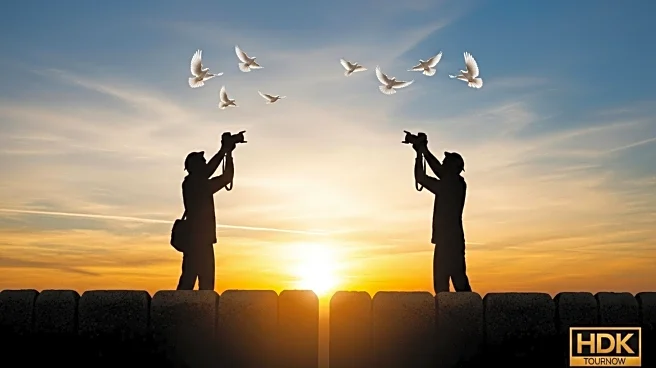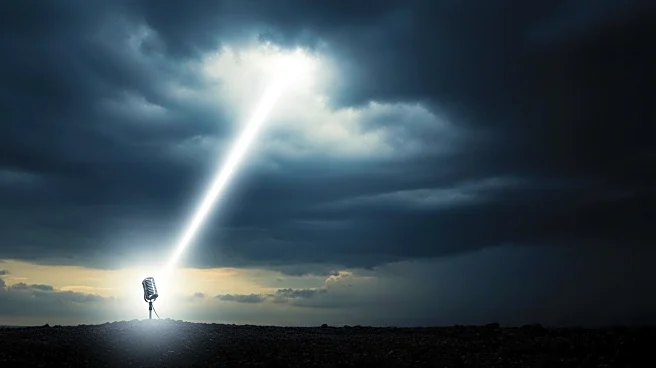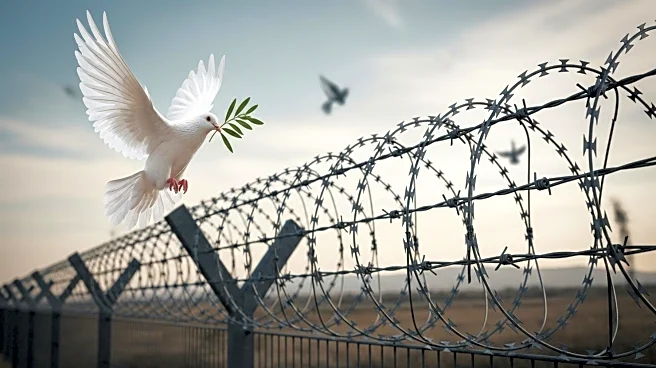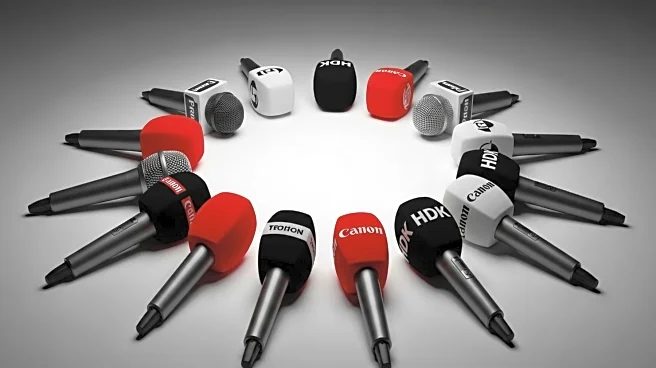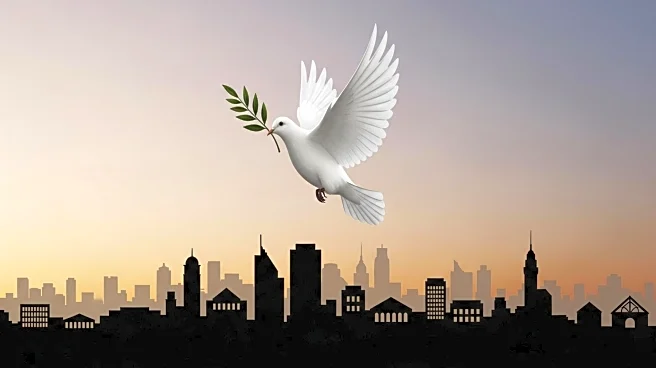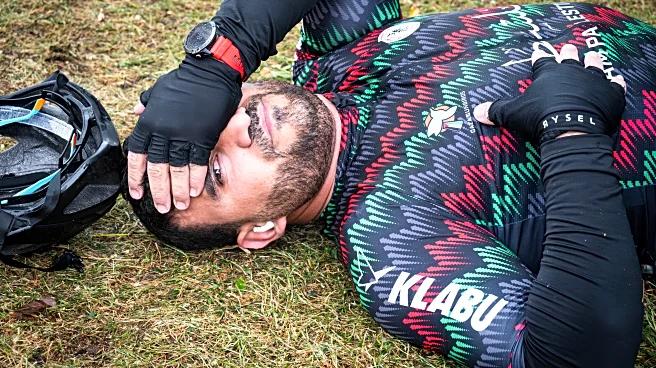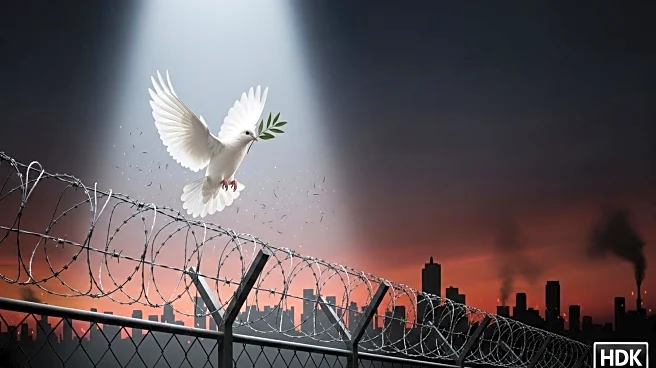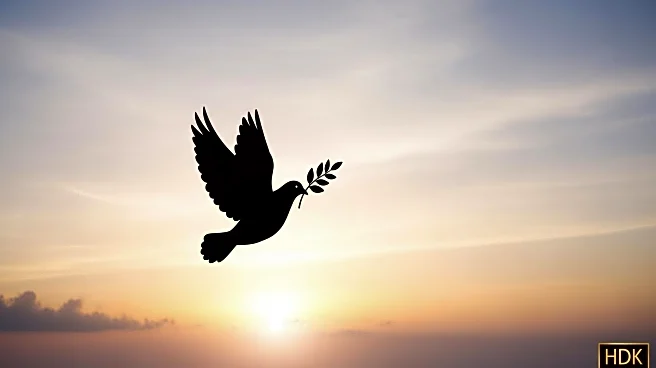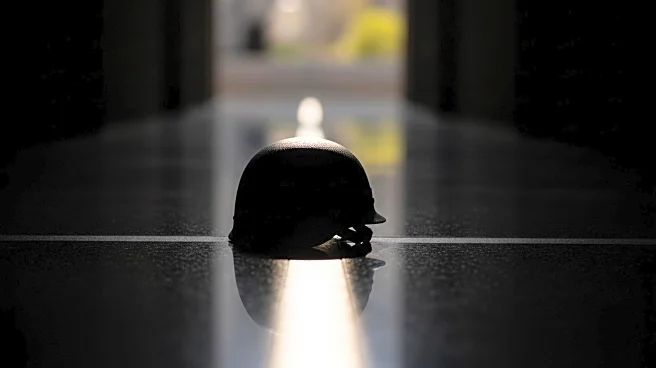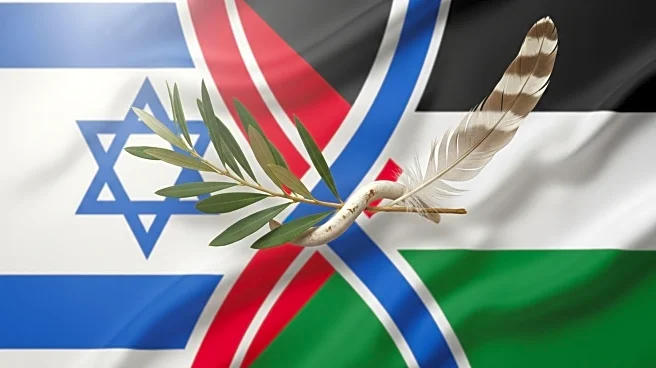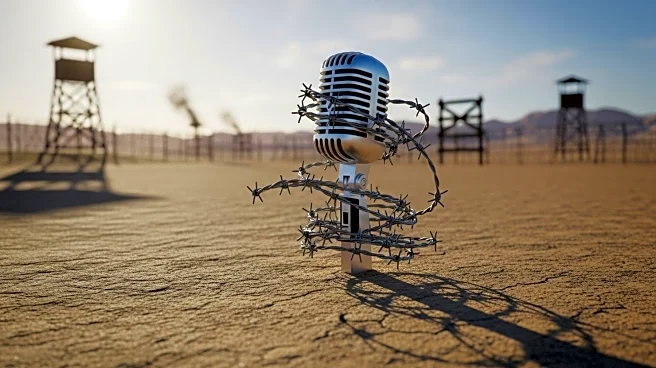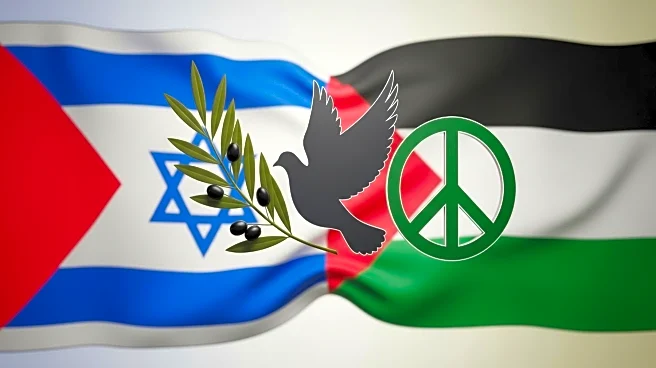What is the story about?
What's Happening?
In Nazareth, Israeli and Palestinian activists gathered to protest the killing of journalists in the ongoing Gaza conflict. The protest was marked by participants wearing 'Press' stickers, symbolizing the insignia used by journalists in conflict zones. The demonstration aimed to highlight the dangers faced by journalists and called for an end to the violence in Gaza. Among the journalists killed was Mariam Dagga, a freelancer for The Associated Press, who died in an Israeli strike on Nasser Hospital in Khan Younis. The Israeli military claimed the target was a Hamas surveillance camera, not the journalists. The conflict, which began on October 7, 2023, has resulted in significant casualties, including over 63,000 deaths in Gaza, according to local health authorities.
Why It's Important?
The protest underscores the perilous conditions for journalists covering conflicts and the broader humanitarian crisis in Gaza. The death of Mariam Dagga and her colleagues highlights the risks faced by media personnel in war zones, raising questions about the protection of journalists and the accountability of military actions. The ongoing conflict has severe implications for regional stability and international relations, with potential impacts on media freedom and human rights. The protest also reflects the shared grief and calls for peace from both Israeli and Palestinian communities, emphasizing the human cost of the conflict.
What's Next?
The international community may increase pressure on Israel to ensure the safety of journalists and civilians in conflict areas. Human rights organizations could call for independent investigations into the deaths of journalists like Mariam Dagga. The protest in Nazareth might inspire similar demonstrations, advocating for peace and accountability. The situation in Gaza remains volatile, with potential for further escalations or diplomatic interventions aimed at resolving the conflict.
Beyond the Headlines
The protest in Nazareth highlights the ethical and legal challenges of warfare, particularly concerning the protection of non-combatants and journalists. The incident raises questions about the rules of engagement and the responsibility of military forces to avoid civilian casualties. It also reflects the broader struggle for media freedom in conflict zones, where journalists play a crucial role in documenting human rights abuses and informing the global community.
AI Generated Content
Do you find this article useful?
